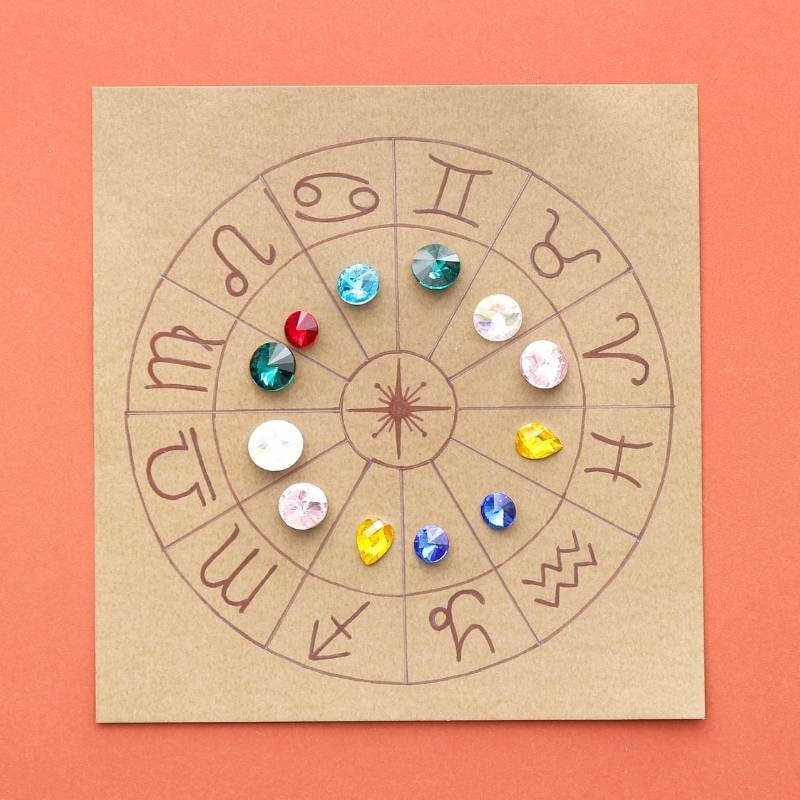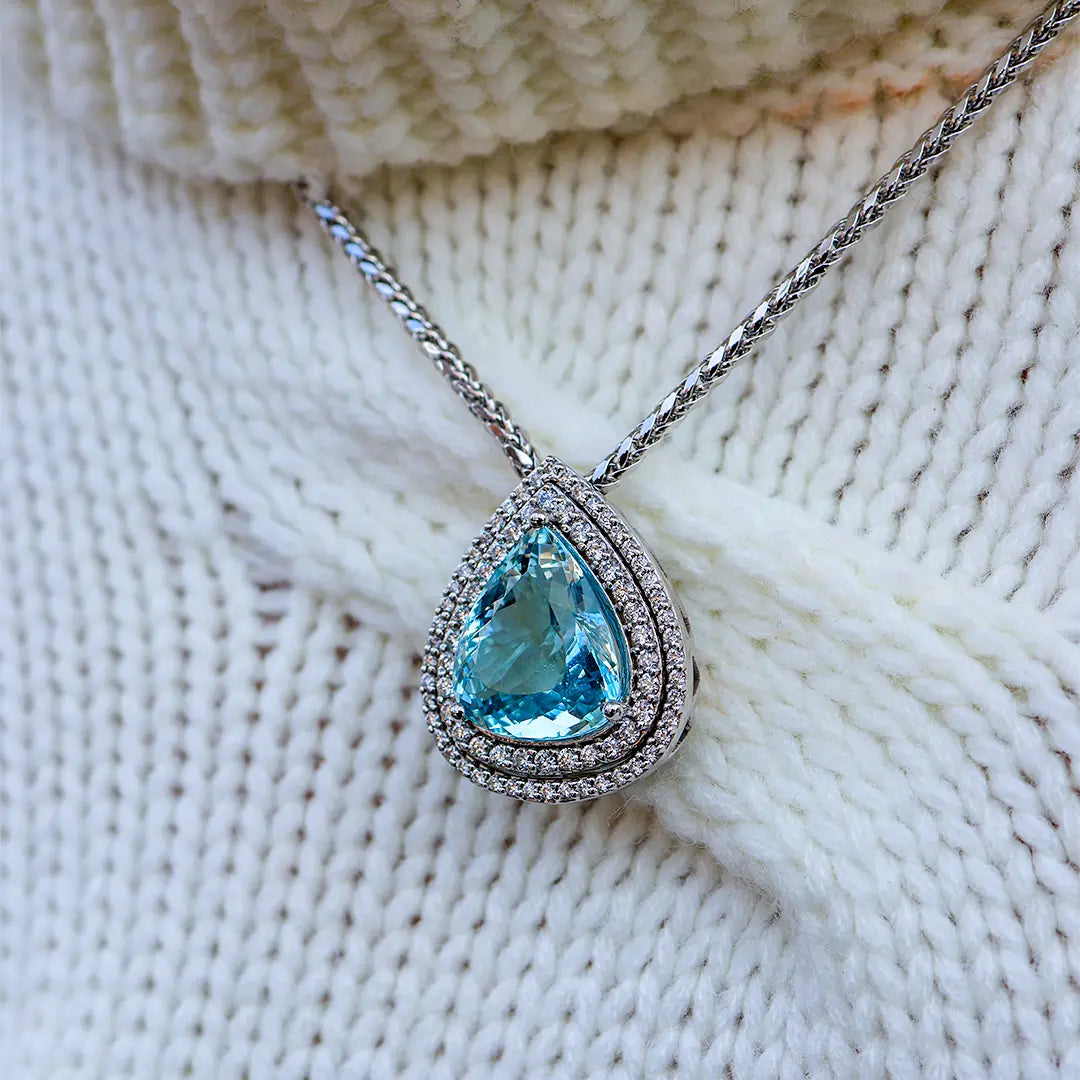
Modern Birthstone Jewelry Guide - Find Your Gemstone
Gemstones have been given special meaning and significance for centuries and each one has been conferred unique powers, attributes, and lore. Whether or not you believe in these birthstone legends, it can be entertaining and informative to learn more about the history of these gemstones.
In this guide, you’ll find each of the modern birthstones and a brief description. This is a great way to find your own birthstone or someone that’s close to you and learn a little bit about what makes it special. Each birthstone explanation will also include a link to a more detailed article.

Birthstone History
Gemstones began having special spiritual meaning and significance since the days of the Old Testament. Described in the book of Exodus, the breastplate of Aaron was worn by the high priest. The breastplate featured 12 gemstones; one for each of the twelve tribes of Israel.
Later in the 1st and 5th centuries, CE birthstones began being associated with signs of the zodiac. Each stone was thought to grant the wearer special powers during the corresponding astrological period. People would selectively wear each of the twelve gems throughout the course of the year for their purported therapeutic effects.
The modern birthstones were established in 1912 by the National Association of Jewelers. It was modified from the original birthstones to include only gemstones that could be polished and faceted. This was done to make it easier to create mother’s jewelry that features a birthstone for each child.
Since 1912 gemstones have occasionally been added, and a few months now have 2 or even 3 birthstones to choose from. The following are all the modern birthstones by month.

January - Garnet
Garnet was named after pomegranate seeds because of the gemstone’s similar dark red wine coloring. It has been a coveted gemstone since the times of ancient Egypt and is thought to open the heart, ignite love, heighten creativity and inspiration, and promote joy.

February - Amethyst
Amethyst is a type of quartz with purple hues ranging from light lavender to deep purple. In the past it was considered one of the most precious gemstones even held in the same regard as diamonds.
It wasn’t until large deposits were found in Brazil that amethyst became more accessible. Amethyst is thought to encourage groundedness, tranquility, and calm in the wearer.

March - Aquamarine
Aquamarine’s greenish-blue color is a popular choice for spring and summer wardrobes. The name comes from the Latin phrase “aqua marinus” which means water of the sea. The symbolic meaning of aquamarine is peacefulness, kindness, truth, trust, youth, health, and home.

April - Diamond
Diamond has become the most popular and prized gemstone in the world and is aptly called the king of birthstones. The name diamond comes from the Greek word “adamas” which means invincible or unbreakable. Diamonds have come to symbolize eternal love and commitment.

May - Emerald
Emerald’s coloring is the definition of rich and deep green. Powerful women throughout the ages, from Cleopatra to Elizabeth Taylor, have worn emeralds. Emerald is a symbol of loyalty, peace, security, and new beginnings.

June - Alexandrite, Pearl, and Moonstone
June birthdays are fortunate enough to have three unique birthstones to choose from. Pearls are organic gemstones created by fresh and saltwater mollusks and are the only gemstone made by a living creature. Moonstone is a type of feldspar and is named after its iridescent glow that has the appearance of moonlight reflecting across the water.
Alexandrite is known for having one of the most extraordinary color changes in the gem world. It has earned the moniker “emerald by day, ruby by night” because in sunlight it appears dark green/blue and in incandescent light, it appears red.

July - Ruby
Rubies are one of the most coveted gemstones used in fine jewelry and are renowned for their stunning fluorescent red color. Red is the color of many of our most intense emotions including anger, love, desire, romance, and power. Ruby has come to symbolize passion, protection, and prosperity.

August - Peridot and Spinel
Peridot is August’s primary birthstone and is recognizable by its beautiful lime green glow. Peridot forms deep in the earth and is brought to the surface by volcanoes. In fact, Hawaiians believed that peridot was the tears of Pele the volcano goddess. Peridot is known as the stone of compassion.
Spinel has recently become popular as an alternative to ruby or pink sapphires. It comes in a variety of colors including blue, green, purple, orange, pink, and grey.

September - Sapphire
The word sapphire comes from the Greek word “sappheiros” with means blue. Although blue is the most popular color of sapphire, sapphires also come in every color of the rainbow. Some even have color-changing characteristics.
Sapphires are thought to enhance creativity and deepen wisdom and knowledge, and are a popular gemstone used in engagement rings.

October - Opal and Tourmaline
Opal is known for its brilliant flashes of rainbow light, and over the centuries it has been associated with good luck and hope.
Tourmaline comes in a wider range of colors than any other gemstone. Some are even multicolored, such as watermelon tourmaline that combines pink or red with green.
Tourmaline is known as the gemstone of poets and creative artists and Shakespeare was known to have a small collection to help him overcome writer’s block.

November - Citrine
Citrine is a variety of quartz (as is amethyst) and can be found in hues from transparent yellow to dark orange. It has been used in jewelry since ancient times and was particularly popular in colorful Scottish jewelry from the Victorian era. Citrine is known to attract wealth and success and raise self-esteem and confidence.

December - Tanzanite, Blue Topaz, and Turquoise
Tanzanite is a modern addition to the December birthstone family. It gets its name from Tanzanite where the gemstone was first discovered, near the awe-inspiring Mount Kilimanjaro.
Blue Topaz comes in a range of hues from sky blue to rich London blue and is associated with beauty, long life, and intelligence.
Turquoise is one of the oldest gemstones and was buried in the tombs of ancient Egyptians dating back to 4,000 BCE. This makes turquoise some of the oldest jewelry ever discovered.
Subscribe to our emails
Be the first to know about new collections and exclusive offers.
